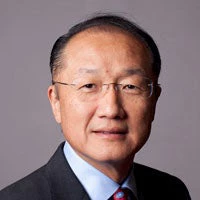
In this series, professionals debate the state – and future – of their industry. Read all the posts here and write your own (use #MyIndustry in the body of your post).
I work in one of the most rewarding fields imaginable – helping low- and middle-income countries develop so that poor people have a fair chance at reaching their full potential. My field of work is at a critical crossroads, and it is no exaggeration that the decisions we make this year will have an impact on everyone in the world and especially the poorest.
The outcomes of this year will help determine whether the world will be able to reach two goals that we’ve set at the World Bank Group: to end extreme poverty by 2030 and to boost shared prosperity by raising the incomes of the poorest 40 percent in developing countries.
Achieving these goals means finding ways to spur economic growth that is inclusive and sustainable; investing in people’s futures by improving the quality of health care and education; and making sure that the most vulnerable do not lose the opportunity for a better life when calamities strike, whether it’s from health crises, natural disasters, or the impact of a changing climate.
We strongly believe we can end extreme poverty in just 15 years in part because we’ve already had great success. In the last 25 years, low- and middle-income countries have helped nearly 1 billion people lift themselves out of extreme poverty. As a result, fewer than 1 billion people today remain in extreme poverty, which we define as living on less than $1.25 a day in 2005 dollars.
Now we need to accelerate economic development in low- and middle-income countries. Fortunately, this year we have several unprecedented opportunities to set new targets, identify new sources of funding, reduce inequalities, and protect our planet for future generations.
Here are some of the opportunities:
- Developing new goals — called the Sustainable Development Goals — that will give countries and the world targets to meet for the next 15 years. This will spur new strategies, create additional resources and give greater incentives for better governance. All of this is designed to give the poor more opportunities to succeed.
- Finding new financing — these new goals will be ambitious and costly so we need to turn the current billions of dollars in financing for projects in low- and middle-income countries into trillions of dollars. The most promising ways to increase financing include catalyzing more private sector investment; developing new financial tools based on closer collaboration among international financial institutions; and helping countries sharply increase domestic resources through improved tax collections.
-
 Making substantial progress on climate change — we’re very concerned about finding creative and effective ways to tackle climate change. This year we must reach a global agreement, based on government commitment to targets, to save the planet for our children and all future generations. In Paris at the end of year, governments must agree to a deal to keep global warming under 2 degrees Celsius. The poor are already feeling the impacts of climate change more than anyone else, and without an effective climate agreement, the poor will suffer even more in the years ahead.
Making substantial progress on climate change — we’re very concerned about finding creative and effective ways to tackle climate change. This year we must reach a global agreement, based on government commitment to targets, to save the planet for our children and all future generations. In Paris at the end of year, governments must agree to a deal to keep global warming under 2 degrees Celsius. The poor are already feeling the impacts of climate change more than anyone else, and without an effective climate agreement, the poor will suffer even more in the years ahead.
My field needs visionary, pragmatic, and collaborative leaders in government, private industry, multilateral development finance, philanthropy, civil society groups, and faith communities. And we need active support and passionate voices of committed citizens like you. What are you or your organizations doing this year to make a difference to end extreme poverty, reduce inequalities, and fight climate change? Please tell me and other LinkedIn readers about what you’re doing or hope to do in the coming months.
This blog post originally appeared on LinkedIn.

Join the Conversation